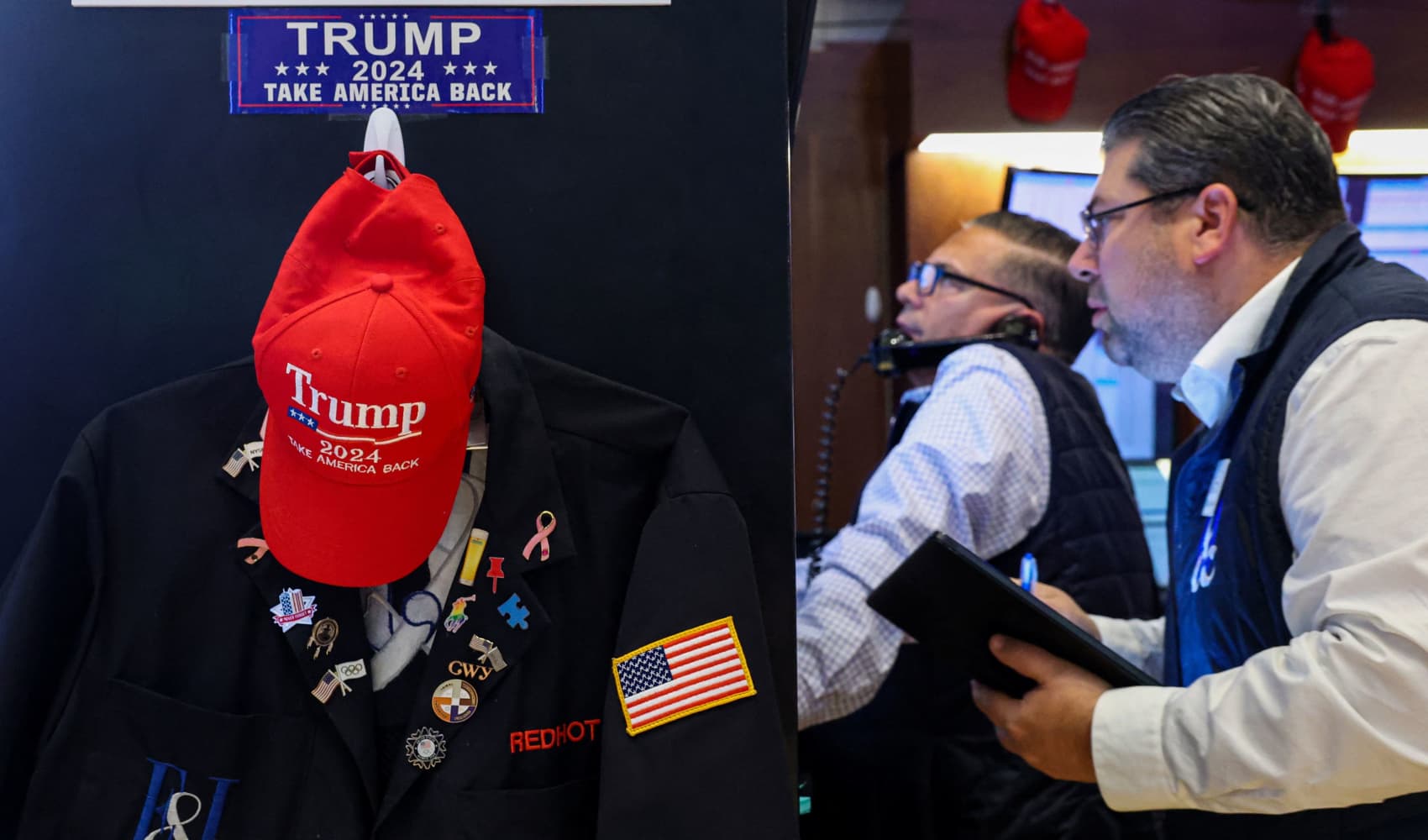
Target Corp.’s Market Pantry and Good & Gather sugar and flour products displayed for sale at the company’s flagship store in Edina, Minnesota, US, on Thursday, Sept. 5, 2024.
- The CPI, a broad measure of goods and services costs across the U.S. economy, increased 0.2% in August, in line with the Dow Jones consensus.
- That put the 12-month inflation rate at 2.5%, down 0.4 percentage point from the July level and the lowest since February 2021.
- Traders priced in an 85% chance that the Fed will approve a quarter percentage point, or 25 basis point, interest rate reduction when its meeting concludes Sept. 18.
- Real earnings also rose for the month, with average hourly earnings outpacing the monthly CPI increase by 0.2%.
Inflation in August declined to its lowest level since February 2021, according to a Labor Department report Wednesday that also showed a key measure higher than expected, setting the stage for an expected quarter percentage point rate cut from the Federal Reserve.
The consumer price index, a broad measure of goods and services costs across the U.S. economy, increased 0.2% for the month, in line with the Dow Jones consensus, the Bureau of Labor Statistics reported.
Get Tri-state area news delivered to your inbox. Sign up for NBC New York's News Headlines newsletter.

That put the 12-month inflation rate at 2.5%, down 0.4 percentage point from the July level, slightly below the estimate for 2.6% and at its lowest level in 3½ years.
However, the core CPI, which excludes volatile food and energy prices, increased 0.3% for the month, slightly higher than the 0.2% estimate. The 12-month core inflation rate held at 3.2%, in line with the forecast.
The slight uptick in core CPI keeps the Fed on defense against inflation, likely negating the probability of a more aggressive interest rate when policymakers meet next Tuesday and Wednesday.

"This isn't the CPI report the market wanted to see. With core inflation coming in higher than expected, the Fed's path to a 50 basis point cut has become more complicated," said Seema Shah, chief global strategist at Principal Asset Management.
Money Report
Stocks slumped following the report, while Treasury yields were mixed. However, the market rebounded later in the day, recouping its losses as the major averages all turned positive.
In the fed funds futures market, traders priced in an 85% chance that the Federal Open Market Committee will approve a quarter percentage point, or 25 basis point, interest rate reduction when its meeting concludes Sept. 18, according to the CME Group's FedWatch measure. A month ago, markets were leaning towards a 50 basis point cut.
"The number is certainly not an obstacle to policy action next week, but the hawks on the committee will likely seize on today's CPI report as evidence that the last mile of inflation needs to be handled with care and caution – a formidable reason to default to a 25 basis points reduction," Shah added.
While the numbers showed that inflation slowly continued to moderate, housing-related costs remain an issue. The shelter component of the CPI, which has about a one-third weighting in the index, climbed 0.5%, accounting for about 70% of the core increase. The shelter index was up 5.2% year over year.
Food prices rose just 0.1%, while energy costs slid 0.8%.
Elsewhere in the report, used vehicle prices decreased 1%, medical care services declined 0.1% and apparel prices increased 0.3%. Egg prices rose 4.8%.
Real earnings also increased for the month, with average hourly earnings outpacing the monthly CPI increase by 0.2%, the BLS said in a separate release. On a 12-month basis, inflation-adjusted average hourly earnings rose 1.3%.
The Fed's attention of late, however, has turned to a slowing labor market. Job creation since April has slowed to nearly half what it was in the prior five months. Central bankers are saying that preventing a broader slowdown is now about as important as the fight against inflation, which in the summer of 2022 hit its highest level in more than 40 years.
Regardless of what the Fed decides when its meeting concludes next Wednesday, markets already are pricing in lower rates. Treasury yields, particularly at the 2- and 10-year duration, are at their lowest levels in more than a year. A recession indicator known as an inverted yield curve has reversed recently, a move that often portends both rate cuts from the Fed as well as a slowdown in the economy.
Wednesday's report offered more evidence that inflation is waning, though it remains above the Fed's 2% goal. There are pockets where prices either stayed elevated or turned higher.
"Although inflation has eased, it does not mean that the prices of things that people buy have actually fallen," said Lisa Sturtevant, chief economist at Bright MLS. "It just means that prices are not increasing as fast. In fact, U.S. consumers now are paying more than 20% more for goods and services than they were before the pandemic."
Airline fares, for instance, increased 3.9% in August after falling the previous five months. Motor vehicle insurance also continued its trek higher, rising 0.6% to push the 12-month increase to 16.5%. Hospital and related services costs jumped 0.4% and are up 5.8% from last year.
At the same time, a pullback in energy costs has helped bring down inflation figures. Gasoline was off 0.6% in August and is down 10.3% from a year ago, part of a 4% slide in the energy index that has included a 12.1% tumble for fuel oil prices.






